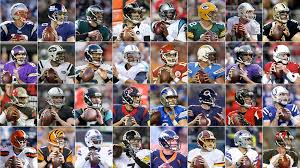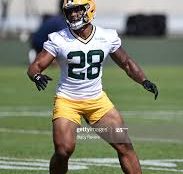Note: This is the sixth and final in a series of six articles on how to approach the quarterback position in a 2QB or Superflex league. The overall strategy article appears here. The second article, “The Multiple Stud QBs Approach”, appears here. The third article, “The QB Value Approach”, appears here. The fourth article, “The Scrubs Approach”, appears here. The fifth article, “The Balanced Approach”, appears here.
There is a Calvin & Hobbes cartoon where Calvin, a precocious and creative six-year old boy, asks his mom for permission to bring his stuffed animal, Hobbes, on their errand to the grocery store. When his mom refuses, Calvin screams, “But I want him to come with us!!” The final caption shows a delighted Calvin carrying his beloved stuffed animal and confiding, “If you can’t win by reason, go for volume.”
The Hoarding Approach to QBs in a Superflex and 2QB league utilizes the same premise. Your goal is acquire as many QBs as possible: the sheer volume of QBs on your roster will skew the market, giving you an opportunity to take advantage of low supply for your leaguemates.
Strengths:
- Trade value. If you have six starting QBs, two promising rookies, and two of the likely ascending back-ups, then other teams will have to go to you to acquire a QB — no one else will have depth, and none will be left on the waiver wire. You can cash in on that.
- Zeroes for opponents. Not all teams will be able to start two QBs each week given byes and injuries. They will have to take a zero at the QB position from time to time.
Weaknesses:
- Resource distribution. The only way to acquire this many QBs is by slightly over-valuing them at the time of acquisition. You have to get the QBs first.
- Back-end of roster weakness. The back-end of the roster is important for upside players and/or spot-starting veterans. You won’t have those players since your back-up spots will be taken by QBs.
Opportunities:
- Exploiting the market. When an opponent needs a QB, you can create an exploitative market. They’ll have to overpay for short-term starters, young players with limited upside, or even reliable veterans — and you’ll be the one that they pay!
- Panic. When other owners realize that you will always be scooping up QBs, it will lead to panic on their part. And when people are panicked, they usually make mistakes.
Threats:
- No trade market develops. Maybe the other owners are able to eke by at QB and won’t overpay, saddling you with an imbalanced roster and players that you don’t really want or believe in on your bench at the quarterback position.
- Limited roster flexibility. See that breakout player on the waiver wire? You can’t pick him up without undermining your strategy and cutting one of those QBs. Need a bye-week filler? You may have to take that zero yourself instead of losing the precious QB.
Playing the supply depletion game is a risky proposition. If others are willing to wait you out until you need those roster spots desperately or until you come down on your trade demands, then you could be sacrificing quality players elsewhere in the hopes of a trade market that never develops. On the other hand, by hoarding players at the most important position, you could create a frenzy where others are forced to react to your strategy, and their inability to field a full active roster of QBs alone could be all the advantage that you need to bring home a championship.
I hope that you found this series helpful, either for your own roster construction or to better understand your opponents’ thoughts (and how to exploit them!). Keep checking this site regularly for new strategy articles!
Targets: Remember — quantity over quality! Any and all starting QBs who have fallen in value and/or are on the waiver. Any and all QBs with a reasonable chance to start this year (e.g., Nathan Peterman) and shot-in-the-dark flyers that might not be on other teams’ radars (e.g., Chad Kelly).



